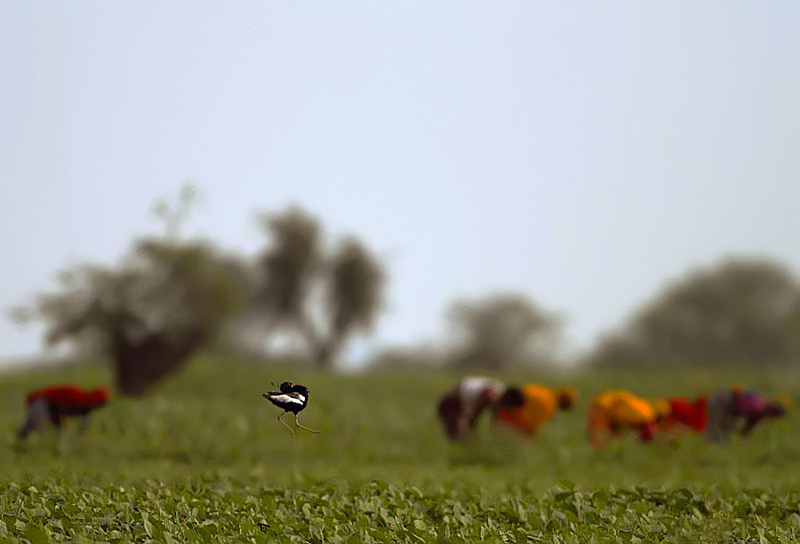
An endangered male Lesser Florican (Sypheotides indicus) displays in the Sonkhaliya grasslands in Ajmer, Rajasthan. Most of Sonkhaliya have been converted into agricultural fields and the remaining into shrub land of the invasive Prosopis juliflora. Surprisingly, in a recent survey more than 150 male floricans were seen in the Sonkhaliya area of about 100 square kilometers. This author (G.S. Bhardwaj — a scientist at the Wildlife Institute of India) who conducted the survey in NW India observed over 35 floricans in a few days in the area. All the sightings were in agricultural fields. This poses a tricky question to the conservation of the bird.
The survey report highlights key conservation issues of the Lesser Florican:
- Lack of National Policy on Grassland Management in India — Based on a national midset mindset that assumes grasslands are wastelands, many of the state owned grasslands and village pasture lands have been planted extensively with tree species like Prosopis juliflora.
- Livestock — Herds of cattle and goats throng these grasslands and cause great disturbance to the breeding floricans, including trampling their nests and eggs.
- Habitat Loss — Degradation of grasslands through conversion of grasslands into agriculture, plantations, invasive species, pesticide pollution and indiscriminate developmental activities in and around grasslands.
- Inadequate protected area coverage — currently, less than 5% of Lesser Florican habitat is protected by Wildlife (Protection) Act, 1972, which is grossly inadequate to save this species.

 CI is a non-profit, non-commercial portal that aims to facilitate wildlife and nature conservation by providing reliable information and the tools needed to campaign effectively.
CI is a non-profit, non-commercial portal that aims to facilitate wildlife and nature conservation by providing reliable information and the tools needed to campaign effectively.
Chosen as 'Picture of the Week'
The Lesser Florican is classified 'Globally Endangered' because it has a very small, declining population, primarily a result of loss and degradation of dry grassland habitat. The rate of decline is predicted to increase in the near future as pressure on the remaining grasslands intensifies in India.